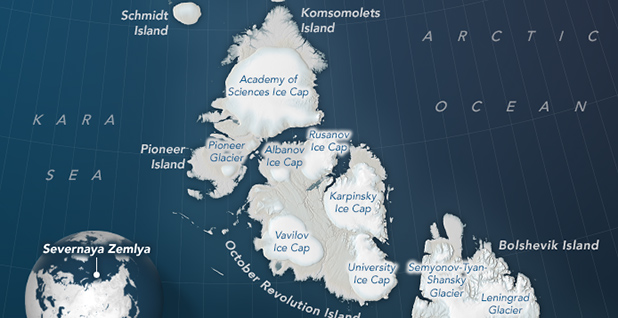Environment & Energy
Related: About this forumVavilov Ice Cap In Arctic's Kara Sea "Projectile Vomiting" Into Ocean After Sudden Acceleration
High in the Russian Arctic, in the chilly waters straddling the Kara and Laptev, an 84-billion-ton island ice cap is projectile vomiting into the sea. Scientists say it could hold useful clues about what to expect as the world continues to warm.
The Vavilov Ice Cap, nestled in Russia's Severnaya Zemlya archipelago, suddenly started to surge forward in 2013. This is not an uncommon event for glaciers — every so often, pressure will build up behind the ice and cause it to temporarily slip forward. These surge events can last anywhere from a few months to a year or more, and they'll typically stabilize on their own.
But in 2015 — two years after the surge started — the Vavilov Ice Cap was still going. By then, it was moving faster than ever, flowing forward at a rate of about 26 meters per day and dumping 4.5 billion tons of ice into the sea over the course of a single year. In total, Vavilov has lost about 9.5 billion tons of ice in the last six years. Scientists monitoring the ice cap's progress say it's moved beyond a simple glacial surge. The rush of ice seems to have transitioned into a phenomenon known as an "ice stream," a long-lasting, fast-moving flow of ice out of the glacier and into the surrounding landscape — or, in this case, the sea.
EDIT

Over time, as the movement of the ice accelerated, the scientists began to observe physical features that suggested the flow had morphed into an ice stream. Rifts and crevasses began to appear on the landscape around the moving ice, which showed up as dark stripes on satellite images. These cracks are typical features of ice streams. While warming didn't necessarily cause the initial surge, the researchers believe rising temperatures may be partly influencing the flow of ice, now that it's on the move. During hotter summers — including unusually warm years in 2015 and 2018 — the researchers observed that the ice tended to flow even faster, slowing down again when the temperatures cool.
EDIT
https://www.scientificamerican.com/article/a-russian-ice-cap-is-collapsing-it-could-be-a-warning/